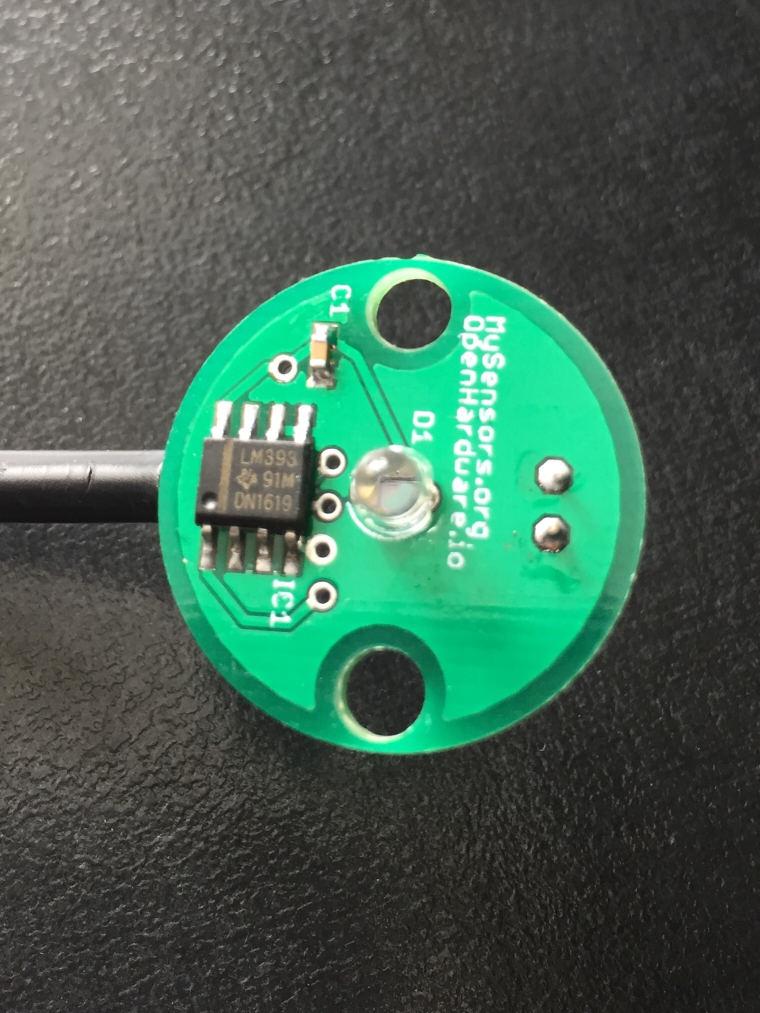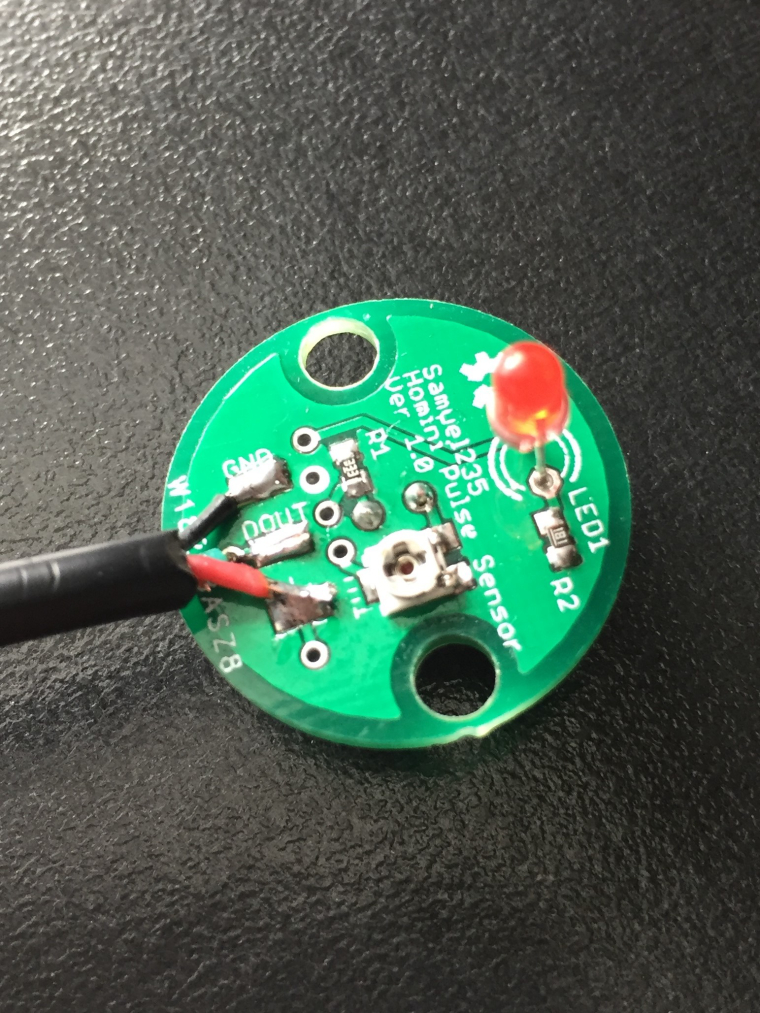Testing and updating can resume now my first year at university has finished and I now have 4 months worth of MySensors development to get started on! 
Homini Pulse Meter Monitor
Brief Description
This ATMEGA328P based board has been created to enable wireless monitoring of your power meter. The product comprises of two parts, one sensor attachment and one custom ATMEGA328P board that the sensor connects to. Both parts are enclosed inside of their own 3D printed enclosures to ensure safety to the devices.
This device has been designed to be located directly on your power meter, the sensor is stuck to the front and the microcontroller is enclosed off to the side of the meter, designed to stick to the side also with velcro, but you can put it where you wish. The sensor module is attached to the microcontroller device via a MicroUSB connector but obviously this can be modified to suit your personal needs.
As the module is running with an external 16MHz crystal, we are able to use MYSBootloader to enable us to use OTA Firmware Updates, saving you from having to physically get the module for a software/firmware update. We have also allowed the use of a ATSHA204 hardware signing by including a footprint for the ATSHA204 IC on the controller board.
Function
- To monitor power usage of your home and report back to controller software for a visible display of your consumed electricity.
Physical Dimensions
- Sensor: 36mm x 24mm x 33mm (Width x Length x Height)
- Microcontroller: TBA
Connectors
- FTDI and SPI for firmware upgrades
- Micro USB for Powering the device
- Micro USB for sensor connection
Connections
Radio Frequency
Footprints for the following radios will be included.
- nRF24L01 Radio Transceiver
- RFM69 Radio Transceiver
Power Supply
Either of the following:
- Micro USB wall charger.
- CR2450 Coincell battery.
Software
Bootloader
- Mains Powered: MYSBootloader running at 16MHz External Crystal to enable the use of OTA updates.
- Battery Powered: MYSBootloader running at 8MHz Internal or External to enable the use of OTA updates.
Fuses
External Crystal (8MHz OR 16MHz):
- low_fuses=0xF7
- high_fuses=0xDA
- extended_fuses=0x06
Internal Crystal (8Mhz only) with Brown-out detection at 1.8v, best option for battery powered device:
- low_fuses=0xE2
- high_fuses=0xDA
- extended_fuses=0x06
Sketch
Will update sketches once i receive PCBs to test different variants of software out:
Generic sketch Located here, alternatively you can find customised sketches on my github
Testing
Testing will commence once micro-controller board has been designed and assembled.
TO-DO List
- Design micro-controller board - COMPLETED
- Send micro-controller board off to be produced
- Assemble and test sensor board
- Assemble and test micro-controller board
Update Log:
- Micro-Controller board designed (25/03/17)
- Sensor board designed (15/03/17)
Issues
- No issues reported at current date.
Appreciations
Special thanks to:
- Mysensors.org
- Openhardware.org
- Sparkfun and Adafruit for their parts library for Eagle
If you have any suggestions, please add to the forum post over at MySensors forum post
Please join in with the forum post at MySensors if you have any input on the topic of electricity monitoring.
I'm very interested in all of your variations, improvements and applications of this module, please add them to the comments with pictures and/or Videos.
Disclaimer
I do not advise you in any way to make/install this product into a property and therefore I take no responsibility for any issues, problems you have or even health implications that you endure while completing the installation or even using the product after installing. BUILD, USE and INSTALL ARE YOUR OWN RISK
Licensing
This product is licensed under the CC-BY-SA OpenHardware certificate. For more information please see https://creativecommons.org/licenses/by-sa/4.0/


